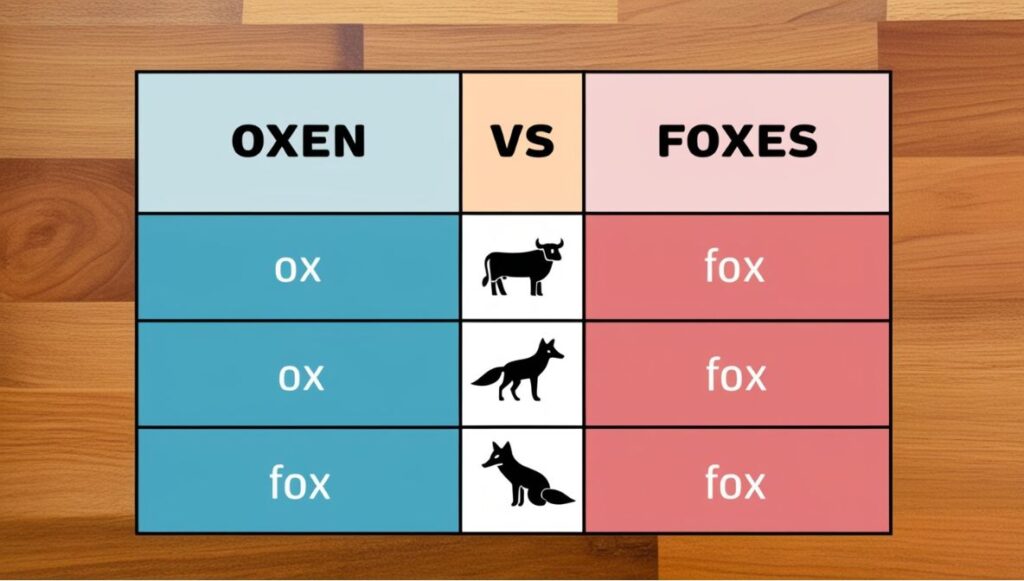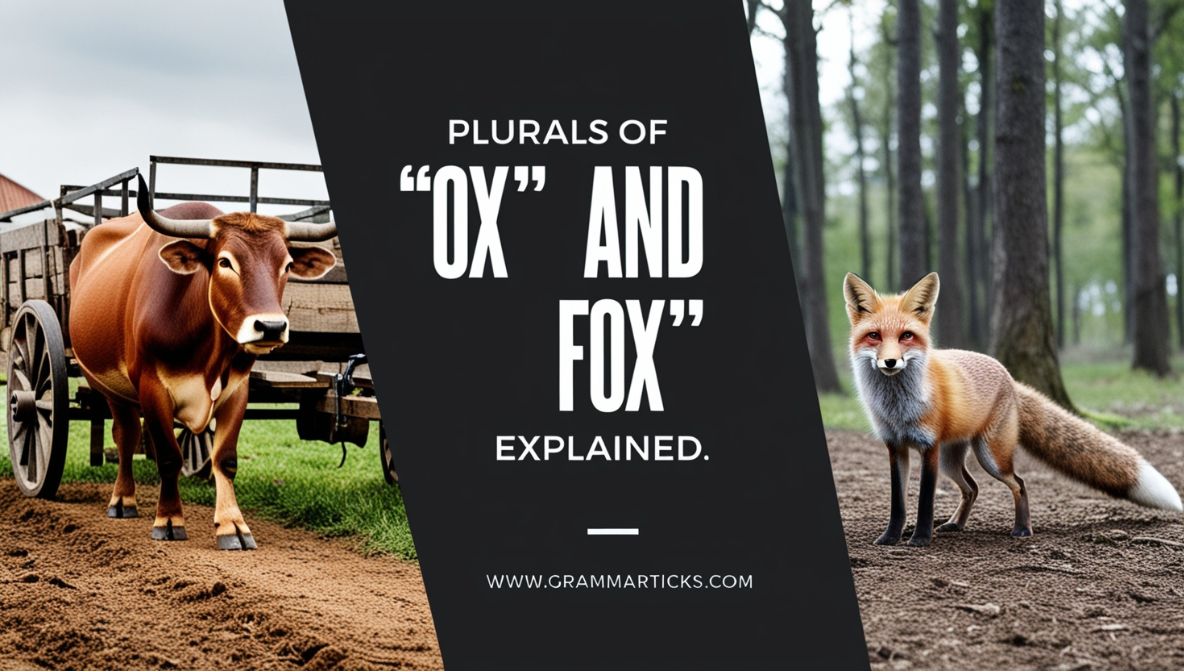When it comes to the plural of ox and fox, many learners stumble over these words because they don’t follow the usual rules. Understanding the plural rules in English helps, but sometimes you run into exceptions that trace back to English language history. The word “ox” turns into “oxen,” while “fox” becomes “foxes.” This difference sparks curiosity about how we make nouns plural and why some plurals seem irregular.
English is full of quirks, especially with irregular noun endings inherited from Old English plurals. By exploring the origins and patterns behind these words, you’ll grasp why “oxen” stuck around and “foxes” took the more modern path. This journey reveals the fascinating evolution of our language.
Singular Forms: Ox and Fox
Before diving into plurals, it helps to understand the singular forms. Both “ox” and “fox” are animal names with clear, simple singular forms, but their origins set the stage for their unusual plurals.
- Ox refers to a domesticated bovine, often used as a draft animal.
- Fox is a wild carnivorous mammal, known for its cunning nature.
These words come from different roots in Old English and developed distinct plural forms as the language evolved.
Understanding English Plural Rules
Most English nouns form plurals by adding -s or -es. For example, fox becomes foxes by adding -es to words ending in -x, -s, -sh, or -ch. This pattern follows the plural rules in English and helps with pronunciation.
However, some nouns follow irregular plurals that don’t fit the modern pattern. The word ox is one of the few remaining examples of a strong Old English plural ending in -en.
Why Ox Changes to Oxen
The plural oxen dates back to Old English plurals where the -en suffix was common for some nouns. This form survived even as most other nouns switched to the simpler -s or -es endings.
Scenario example:
- “The farmer had three oxen pulling the cart.”
- Saying “three oxes” sounds odd and is grammatically incorrect.
Remember: oxen is the correct plural, not oxes.
Why Fox Changes to Foxes
In contrast, fox follows the regular pattern for nouns ending in -x by adding -es. This also helps with pronunciation, turning the ending into an extra syllable (/ɪz/ sound).
Scenario example:
- “The forest is home to many foxes.”
- Using “foxs” or “foxen” would confuse readers and listeners.
The fox plural is consistent with how we pluralize other words like box → boxes or mix → mixes.
Comparing Oxen and Foxes Side by Side

| Feature | Ox / Oxen | Fox / Foxes |
|---|---|---|
| Singular | Ox | Fox |
| Plural | Oxen (irregular Old English) | Foxes (regular modern English) |
| Plural suffix | -en | -es |
| Pronunciation of plural | /ˈɒksən/ | /ˈfɒksɪz/ |
| Common mistakes | Oxes (incorrect) | Foxs or Foxen (incorrect) |
This table highlights the main differences and common errors in animal plurals for these words.
Tips to Overcome Confusion
- Memorize that the plural of ox is always oxen—no exceptions.
- Remember that words ending in -x typically add -es for plurals, so fox becomes foxes.
- Use mnemonics: Think “oxen” sounds like “ox + en” (en as an old plural ending).
- When in doubt, check trusted sources or dictionaries.
Common Misconceptions About Oxen vs Oxes and Foxes vs Fox
Many learners try to apply modern plural rules to ox, producing the incorrect plural oxes. Meanwhile, some might assume fox follows the same old plural rule as ox and say foxen, which doesn’t exist.
Why Language Keeps These Odd Plurals
English is a patchwork quilt of history, and some Old-fashioned English plurals like oxen survived because they became fixed in the language. Meanwhile, simpler endings like -es took over for most other nouns like foxes. This mix is part of the English language evolution and its rich, sometimes confusing, grammar.
FAQs
No. The correct plural of ox is oxen. “Oxes” is incorrect.
Because nouns ending in -x usually add -es for easier pronunciation.
Yes. Examples include children and brethren, though they are rare.
Final Word
The plural of ox and fox shows how English can be tricky. While ox becomes oxen, fox simply adds -es to become foxes. This difference comes from old rules mixed with new ones. Knowing this helps you avoid common mistakes like saying oxes or foxen. English has many irregular plurals, but these two stand out because of their history. Next time you talk about these animals, use the right plural. It makes your English sound natural and clear. Understanding these plurals is a small step to mastering the language.

